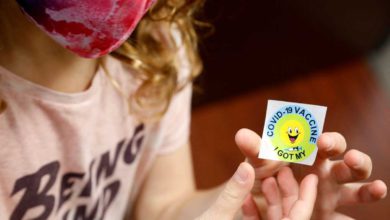Early safety data from the first month of COVID-19 vaccination finds the shots are as safe as the studies suggested they'd be.
Although the rate of severe allergic reactions is higher than in the general population, everyone with an allergic response been treated successfully, and no other serious problems have turned up among the first 22 million people vaccinated, according to the Centers for Disease Control and Prevention.
The data was collected from several tracking systems, including a voluntary system where people who are vaccinated report their symptoms via text. Another allows people who believe they have been harmed by a vaccine to contribute their information and a third collects reports from medical records.
Although it's never possible to prove something is completely safe, data from these tracking systems suggest the vaccines are not causing large numbers of unusual or dangerous results.
Tracking COVID-19 vaccine distribution by state:How many people have been vaccinated in the US?
In a Wednesday meeting, Dr. Tom Shimabukuro, deputy director of the CDC's Immunization Safety Office, briefed a CDC advisory committee on the agency's review of safety data collected so far on the two authorized vaccines.
Side effects remain a common result of both the Pfizer-BioNTech and Moderna vaccines, with 70% of people who self-reported saying they suffered pain.
Vaccinated people have suffered major health crises and even death within a few days of receiving a shot. But the rate of those events is no higher than would be expected in the general population and cannot be connected to the vaccine, the review found.
More than 22M Americans have received at least one vaccine dose
More than 2 million people out of the first 22 million to receive at least one dose of the vaccine reported to the V-safe, a self-reporting system involving web surveys and text messages.
Of these, more than 70% reported pain, 33% fatigue, 30% headaches, 23% muscle pain, and about 11% chills, fever, swelling or joint pain.
There was little difference in reported side effects between the two vaccines, though people generally had a harder time with the second dose than the first.

More than 9,000 people reported side effects following vaccination to the CDC's Vaccine Adverse Event Reporting System, or VAERS. Just under 1,000 of those reports were considered serious. The majority of complaints involved headaches, fatigue, dizziness, nausea, chills, fever and pain.
A third safety reporting system, called the Vaccine Safety Datalink, looks at medical records from nine participating health care organizations, including data on more than 12 million people per year. More than 162,000 people in the system have received at least one COVID-19 shot.
In that group, there were "no signals as of January 16" of increased risk for any of 20 common conditions, which included heart attack, appendicitis, embolisms and diseases caused by low platelet counts.
In the vaccinated group, four people reported Bell's palsy, a form of facial paralysis seen in a small number of people in each of the vaccine trials. In the unvaccinated group, there were 348 cases.
Nursing home deaths 'appear unrelated to vaccination for COVID-19'
One way to figure out if COVID-19 vaccines are killing people is to look at the number of people expected to die over a period of time and compare that to actual deaths that occurred within a few days of vaccination.
VAERS received reports of 196 deaths following COVID-19 vaccination.
Of those, 66% were residents of long-term care facilities. About 1.3 million nursing home residents were vaccinated between Dec. 21 and Jan. 18.
Luck, foresight and science:How an unheralded team developed a COVID-19 vaccine in record time
In a group that large followed over that length of time, 11,440 people would be expected to die of all causes. That led the CDC to conclude the much lower number of nursing home deaths were not caused by vaccination.
Barbara Bardenheier, of the Brown University School of Public Health, conducted a related study of residents at Genesis Healthcare, the largest nursing home company in the United States.
More than 7,000 Genesis residents in 118 facilities received their first vaccine dose between Dec. 18 and Dec. 31. After excluding people with active COVID-19 infections, the researchers found fewer deaths among the vaccinated residents compared to unvaccinated ones.
"Findings suggest that short term mortality rates appear unrelated to vaccination for COVID-19 in skilled nursing facility residents," according to a slide summarizing the study's results.
The CDC also found no causal link between vaccination and deaths among younger, healthier people.
Among 13.7 million people under 65 , 168 people would be expected to suffer a sudden, lethal heart attack over a typical 35-day period. By comparison, 18 such deaths were reported to VAERS among people who had recently been vaccinated.
The risk of COVID-19 sickness is greater than risk of anaphylaxis
Both vaccines have been shown to trigger a relatively high – though still rare – rate of severe allergic reactions.
Among the 10 million people who received the Pfizer-BioNTech vaccine, 50 went into anaphylaxis shock, a rate of five serious allergic reactions per 1 million doses. Twenty-one people out of 7.6 million who received the Moderna vaccine also went into shock, a rate of 2.8 per 1 million doses.
Ninety percent of these incidents occurred within a half hour of getting a shot and all recovered.
Explore how COVID-19 vaccine works:An augmented reality journey into the body
By comparison, for the seasonal flu shot, the rate of anaphylaxis is 1.3 per million shots, substantially lower than with the two authorized COVID-19 vaccines.
Still, "the risks of getting sick from COVID-19 are much higher than the risks of anaphylaxis," CDC Director Dr. Rochelle Walensky said in a separate meeting Wednesday.
The CDC is investigating whether people who previously had COVID-19 before getting the shot were more likely to have an allergic reaction.
Contact Karen Weintraub at [email protected].
Health and patient safety coverage at USA TODAY is made possible in part by a grant from the Masimo Foundation for Ethics, Innovation and Competition in Healthcare. The Masimo Foundation does not provide editorial input.
Source link










